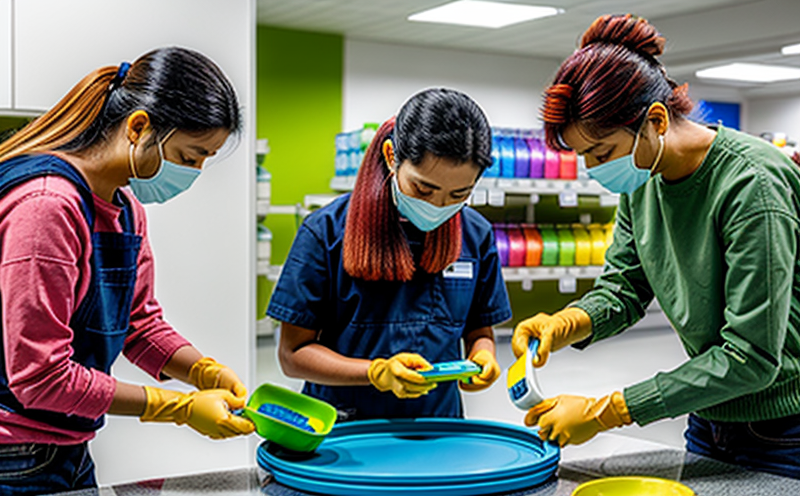Testing the ability of consumer products to maintain color under various environmental conditions
Maintaining Color Integrity Why Testing is Crucial for Consumer Products
In todays competitive market, consumer products face an array of challenges to ensure their color consistency and appearance remain unaffected under various environmental conditions. The colors of a product can significantly impact its aesthetic appeal, durability, and overall user experience. As a result, manufacturers are increasingly seeking solutions to test the ability of their products to maintain color under diverse conditions.
At Eurolab, we offer a laboratory service specifically designed to address this critical aspect testing the ability of consumer products to maintain color under various environmental conditions. This comprehensive evaluation ensures that your products meet the exacting standards required by consumers and regulatory bodies alike.
Why is Testing Essential?
In the development process, manufacturers often prioritize functional aspects over aesthetic ones. However, a products appearance plays a vital role in consumer satisfaction and loyalty. The colors of your product can either captivate or repel potential buyers, depending on their durability under different environmental conditions. By testing color retention, you can
Enhance Product Performance Ensure that your products colors remain vibrant and consistent across various usage scenarios.
Boost Brand Credibility Demonstrated commitment to quality and aesthetics fosters consumer trust and loyalty.
Reduce Rejection Rates Minimize the likelihood of defective or poorly performing products reaching the market.
Key Benefits of Our Laboratory Service
Our laboratory service provides a comprehensive evaluation of your products color retention under various environmental conditions, including
Accelerated Weathering Tests (ASTM D4329) Simulate the effects of natural weathering on your products colors.
Colorfastness to Light (ISO 105-B02) Evaluate how your products colors resist fading due to exposure to light.
Color Retention in Soiling (AATCC Test Method 121) Assess how your products colors remain unaffected by dirt and grime accumulation.
By selecting Eurolab as your trusted partner, you can
Meet Regulatory Requirements Comply with industry standards for color retention and durability.
Save Time and Resources Leverage our expertise to accelerate the testing process and reduce costs associated with re-testing or product recalls.
Gain Accurate Insights Receive detailed reports on your products performance under various environmental conditions.
How Does Our Laboratory Service Work?
Our expert technicians employ advanced equipment and proprietary methods to evaluate your products color retention. The process involves
Sample preparation We carefully prepare your product samples for testing.
Environmental condition simulation Our laboratory mimics real-world scenarios, such as exposure to light, heat, or moisture.
Color measurement Advanced instruments capture precise color data before and after environmental conditioning.
QA Section
Q What types of products can be tested using this service?
A We can evaluate a wide range of consumer products, including textiles, paints, coatings, plastics, and more.
Q How long does the testing process typically take?
A The duration of our laboratory service varies depending on the specific test methods employed. Our team will work closely with you to determine the most suitable approach for your product.
Q Can I get a custom-tailored solution for my products unique needs?
A Yes, we offer flexible testing packages and adapt our services to meet your specific requirements.
Q Are there any industry standards or regulations that dictate this type of testing?
A Yes, various regulatory bodies and industry associations require manufacturers to conduct color retention tests. We ensure compliance with the most up-to-date standards.
By choosing Eurolab for your color retention testing needs, you can rest assured that your products meet the highest standards of quality and appearance. Dont let subpar color performance undermine your brand reputation trust our expertise and take the first step towards unparalleled product excellence.
-
Assessing the resistance of materials, such as fabrics, dyes, and plastics, to fading or bleeding over time
-
Simulating exposure to light, heat, and humidity to evaluate how colors remain stable in different products
-
Testing the impact of washing, drying, and other cleaning methods on color retention in textiles
-
Evaluating the performance of pigments and dyes used in consumer goods for color stability
-
Simulating exposure to common household chemicals to assess the impact on colorfastness
-
Testing the ability of colors to remain stable under UV light exposure in outdoor products
-
Assessing the potential for color bleeding or transfer between materials in multi-material products
-
Testing the resistance of consumer goods to fading when exposed to sunlight or artificial light
-
Evaluating the color durability of products like clothing, accessories, and home furnishings
-
Testing for discoloration or fading in items subjected to repeated use and washing
-
Assessing the effect of high-temperature environments on color stability in materials
-
Testing how products hold up to repeated abrasion or rubbing without losing color quality
-
Simulating prolonged exposure to extreme environmental conditions like saltwater or chlorinated water
-
Evaluating the effect of sweat, oils, and other bodily fluids on the color stability of products
-
Testing for color retention in synthetic and natural fabrics used in clothing, upholstery, and accessories
-
Assessing how colorfastness impacts the perceived quality and longevity of consumer goods
-
Testing the durability of printed or dyed designs in products like clothing, toys, or household items
-
Evaluating the effectiveness of protective coatings or treatments in enhancing color retention
-
Verifying that products meet colorfastness standards for the intended market
-
Testing color consistency across different production batches to ensure uniformity




